Battery Booster Pack for Mobile Robots P3-AT
Intro
This project started as a way to support the need for more power longevity during testing and as a way to utilize batteries several sizes too large that were accidently ordered. The batteries used for this pack were three 12V 12AH Lead Acid Casil Batteries about 4” by 6”. While these batteries were several inches too large to fit in to the robot itself, the voltage and current were compatible enough that they could easily be added in parallel to the standard batteries used.
The Mount
In order for the batteries to be easily added to the bot without interfering with functionality or taking up the valuable real estate the top of the bot offers, a mount had to be constructed. For this mount we decided to use angle iron as the main material and nuts and bolts as the fasteners. These materials were chosen because of the ease with which they can be used for construction and the strength they'll provide in the face of the somewhat weighty batteries. The dimensions of the base are: 13.5" wide x 9.25" long x 5.5" tall. The battery rails are 7.25” long and 4”apart with a flat bar attached underneath the rails for extra support.
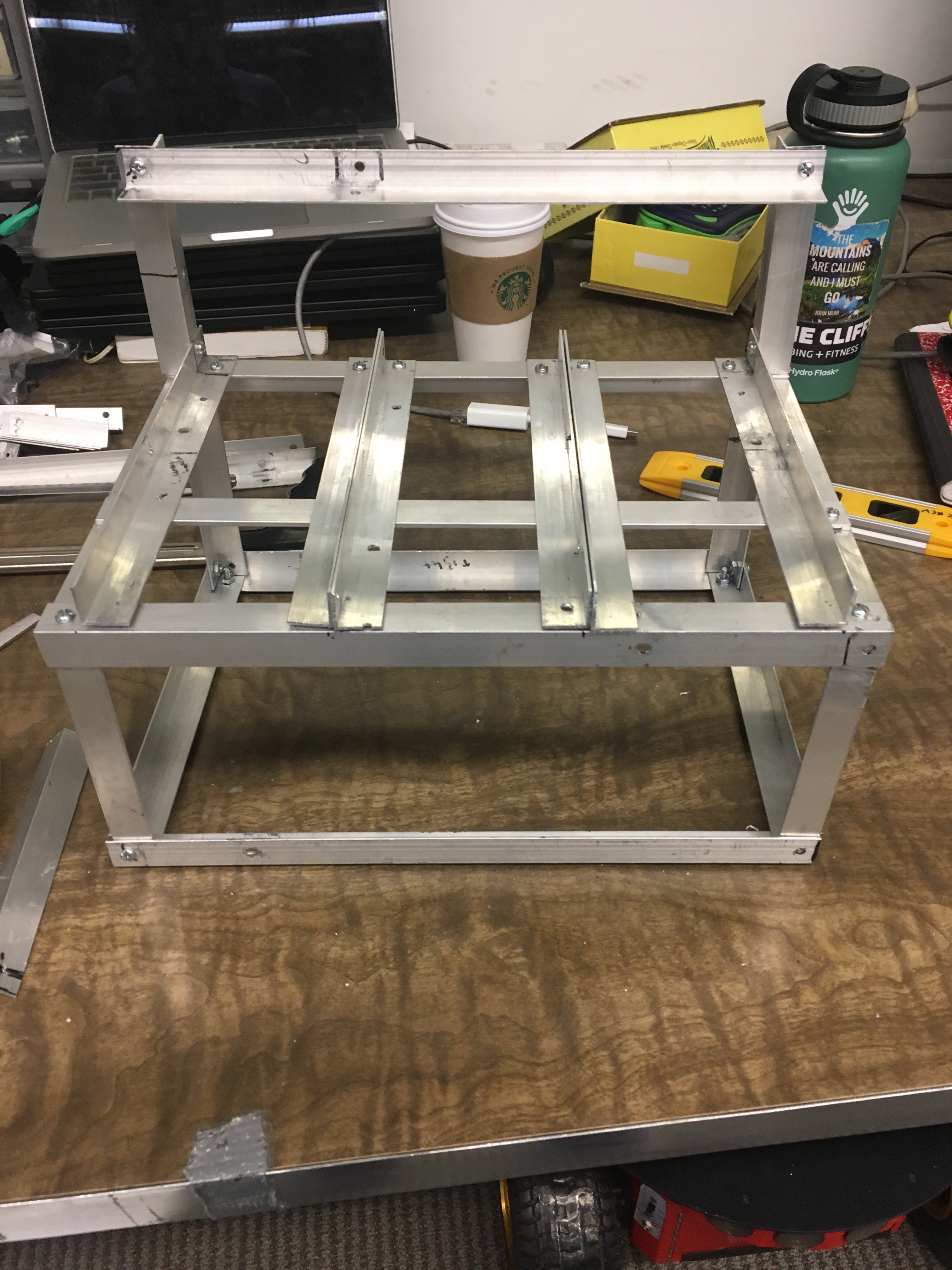
The Wiring
For the wiring we used two strands of size 8 electrical wire twisted together and soldered to bared female spade connectors, wrapped in electrical tape. Each section of wire was connected by wire nuts.
The connector we used between the batteries and the bot itself was a standard RV connector.
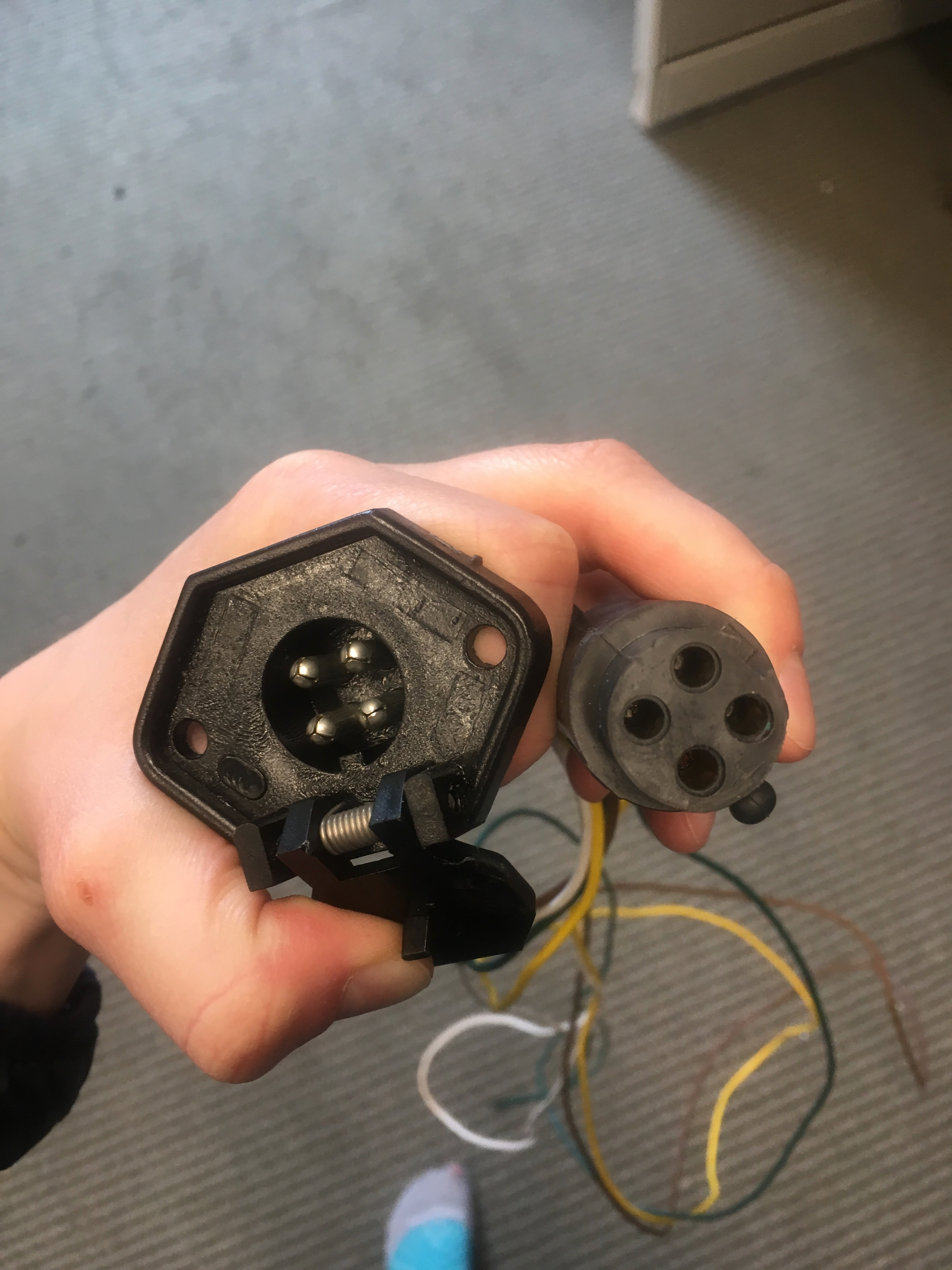
We cut the wires of the RV connector in the middle and connected the wires on the male end to the loose ends of the batteries’ wires with powerpole stackable connectors.
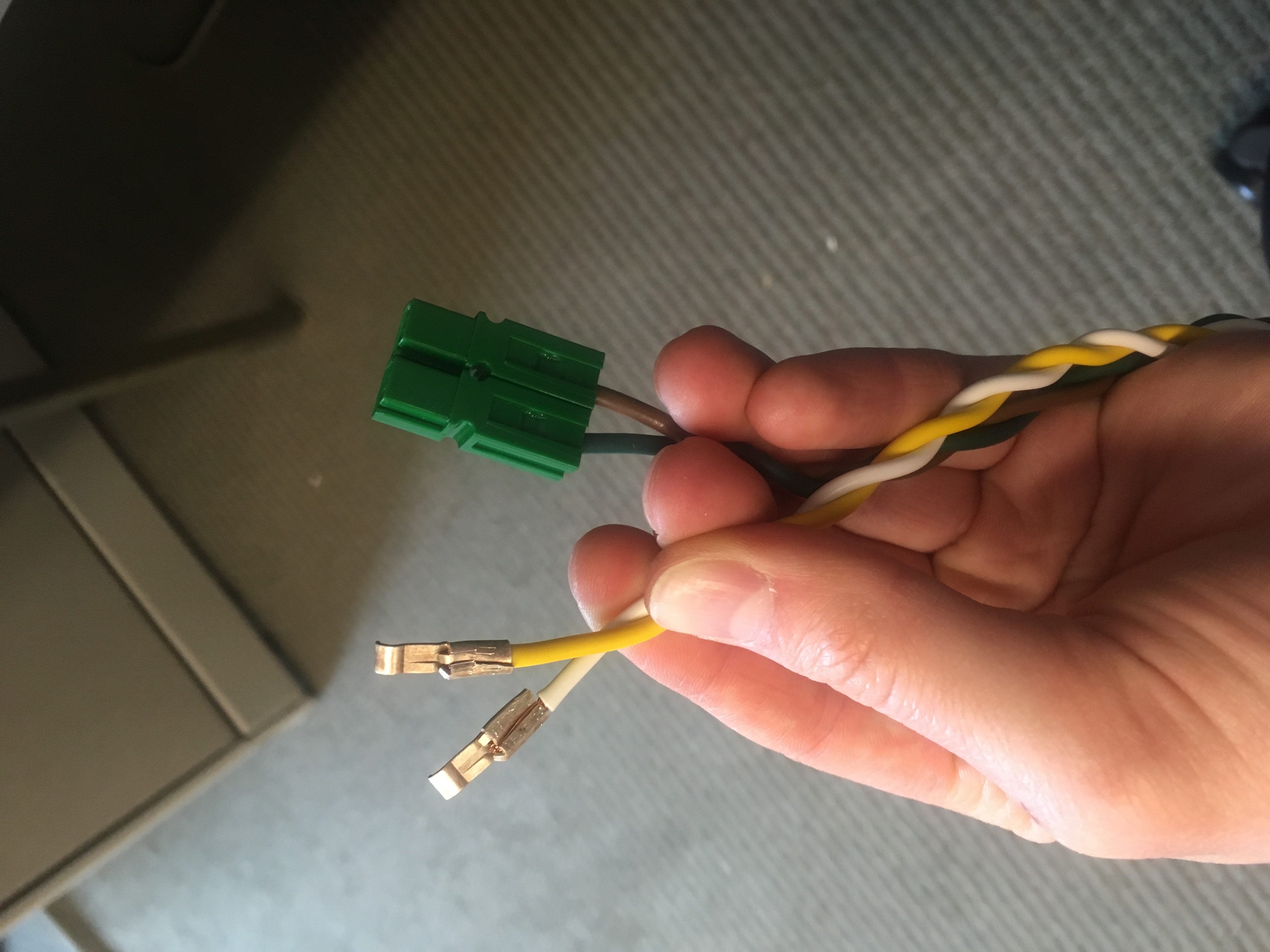
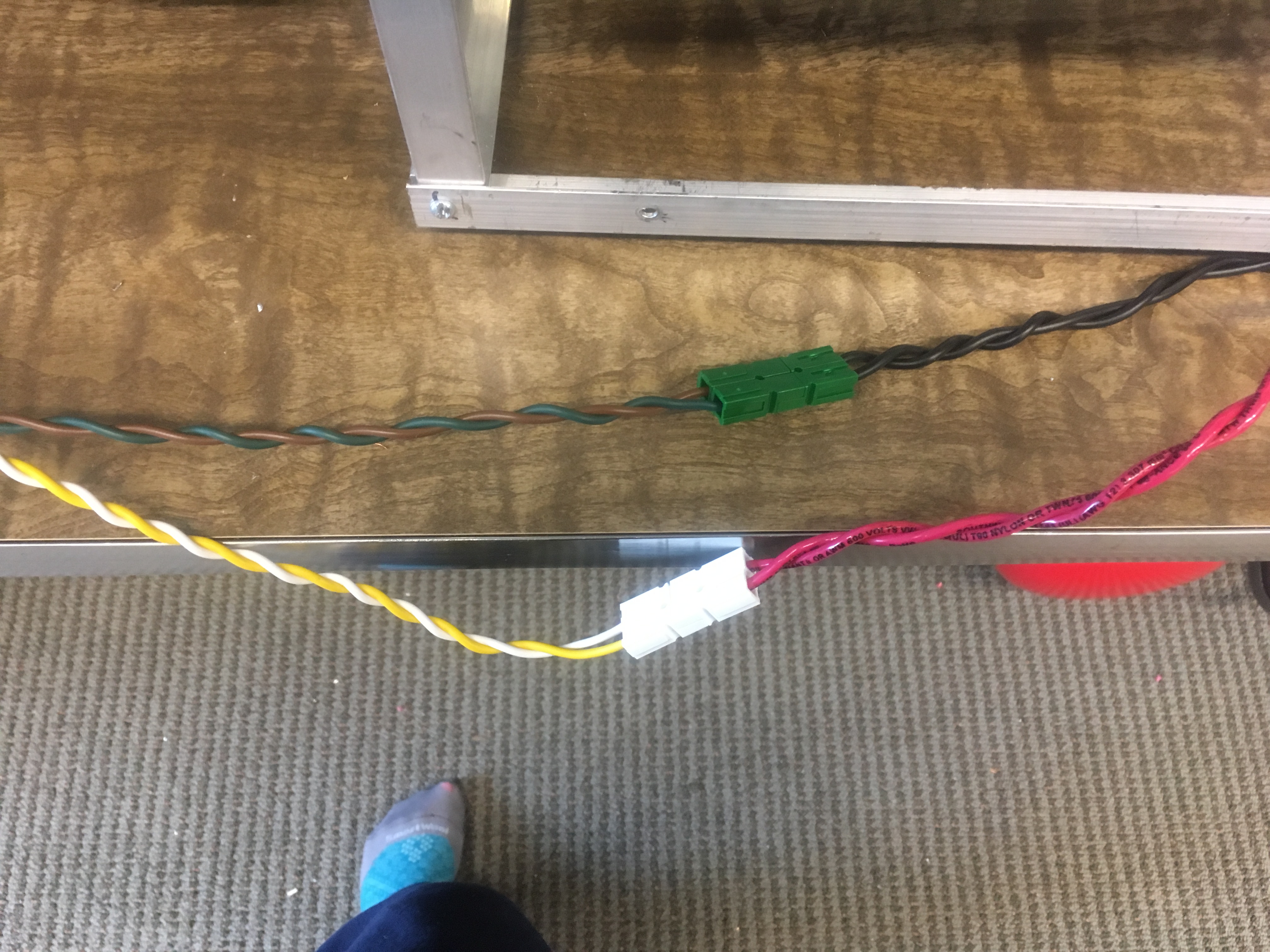
In order to connect the wires stemming from the female end to the bot itself we bared the wires and crimped those on to ring tongue connectors which we then screwed in to a positive (pictured left) and negative (pictured right) connection on the robot’s battery strip.
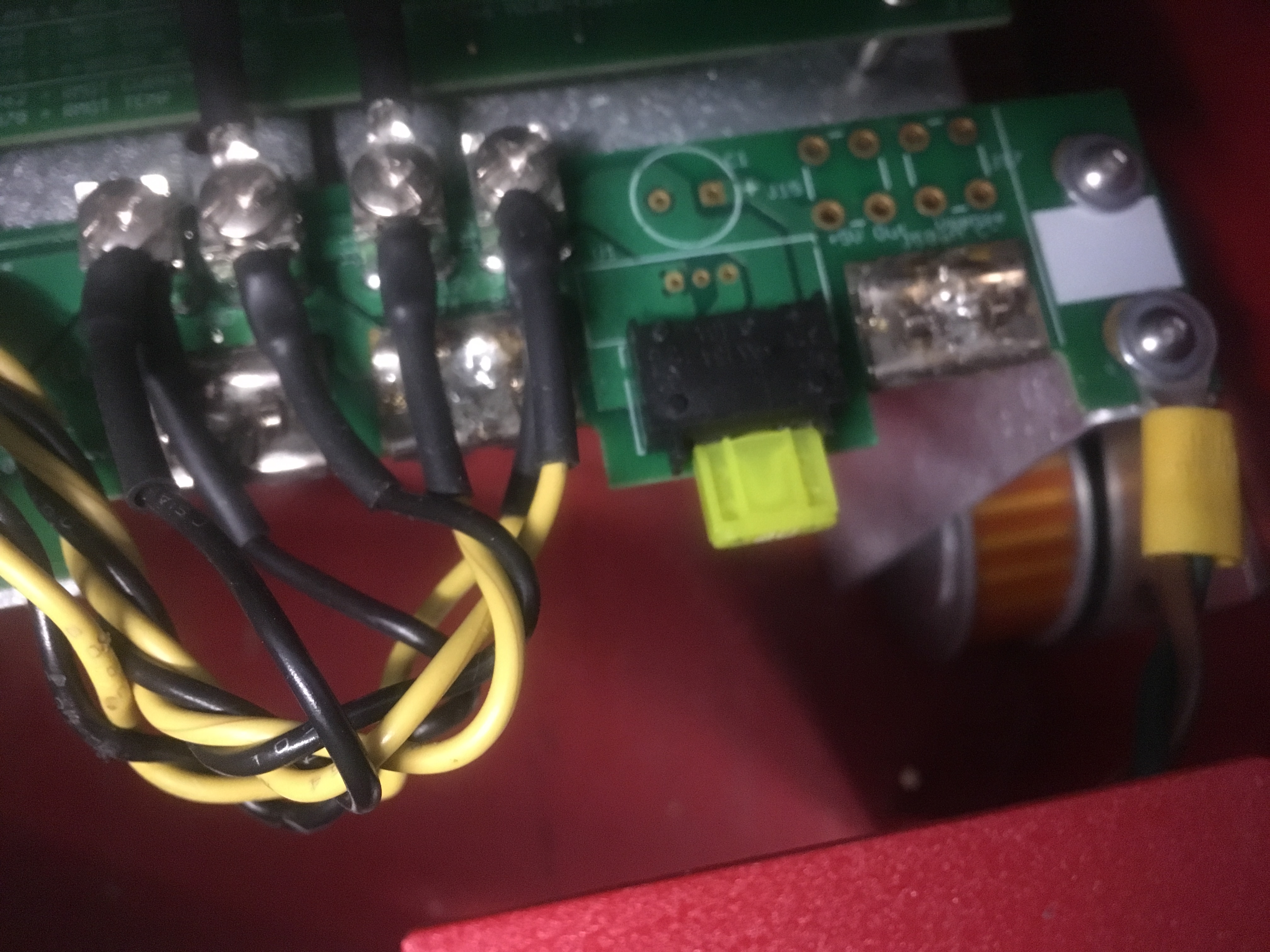
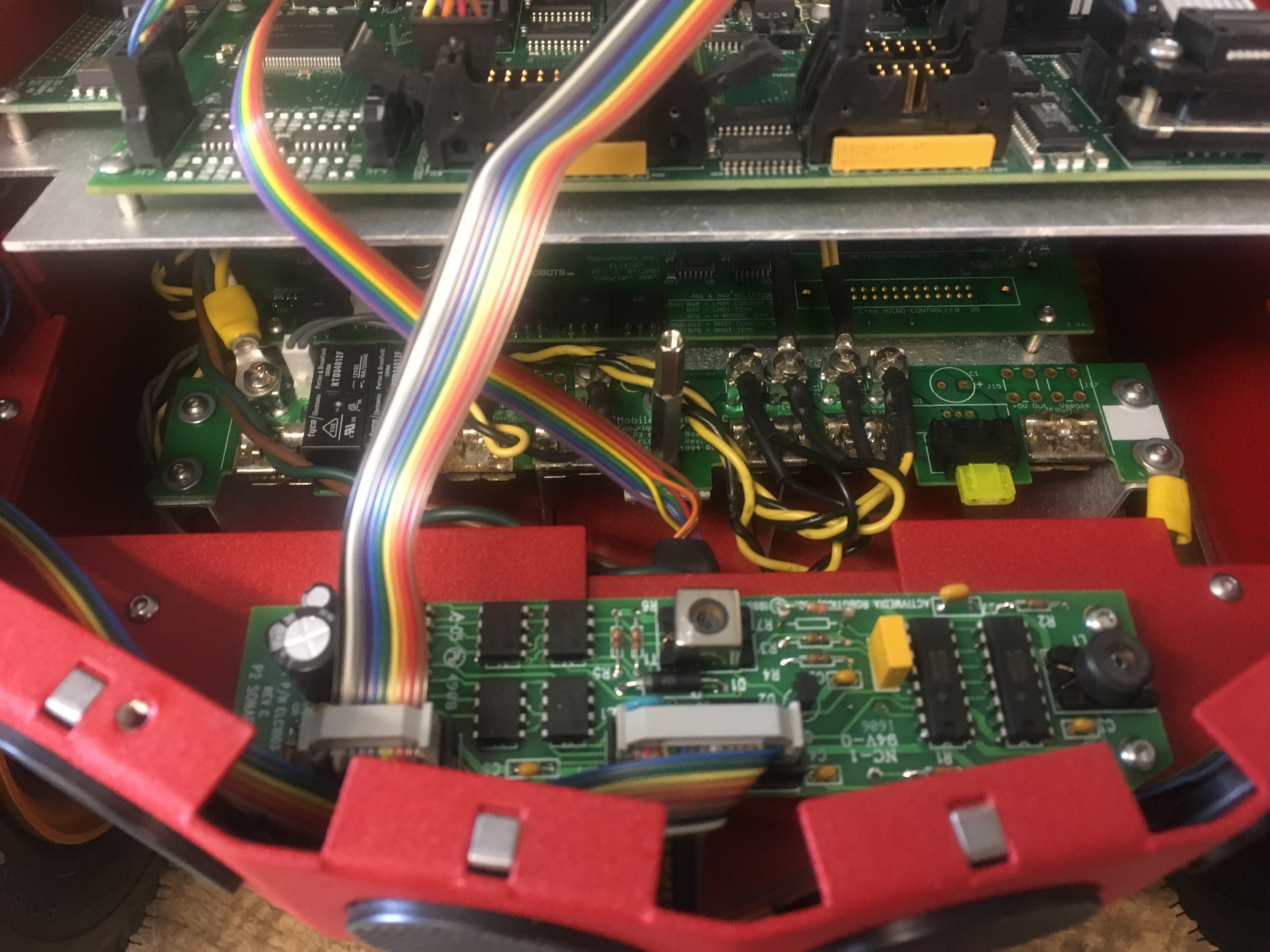

The Entire Setup
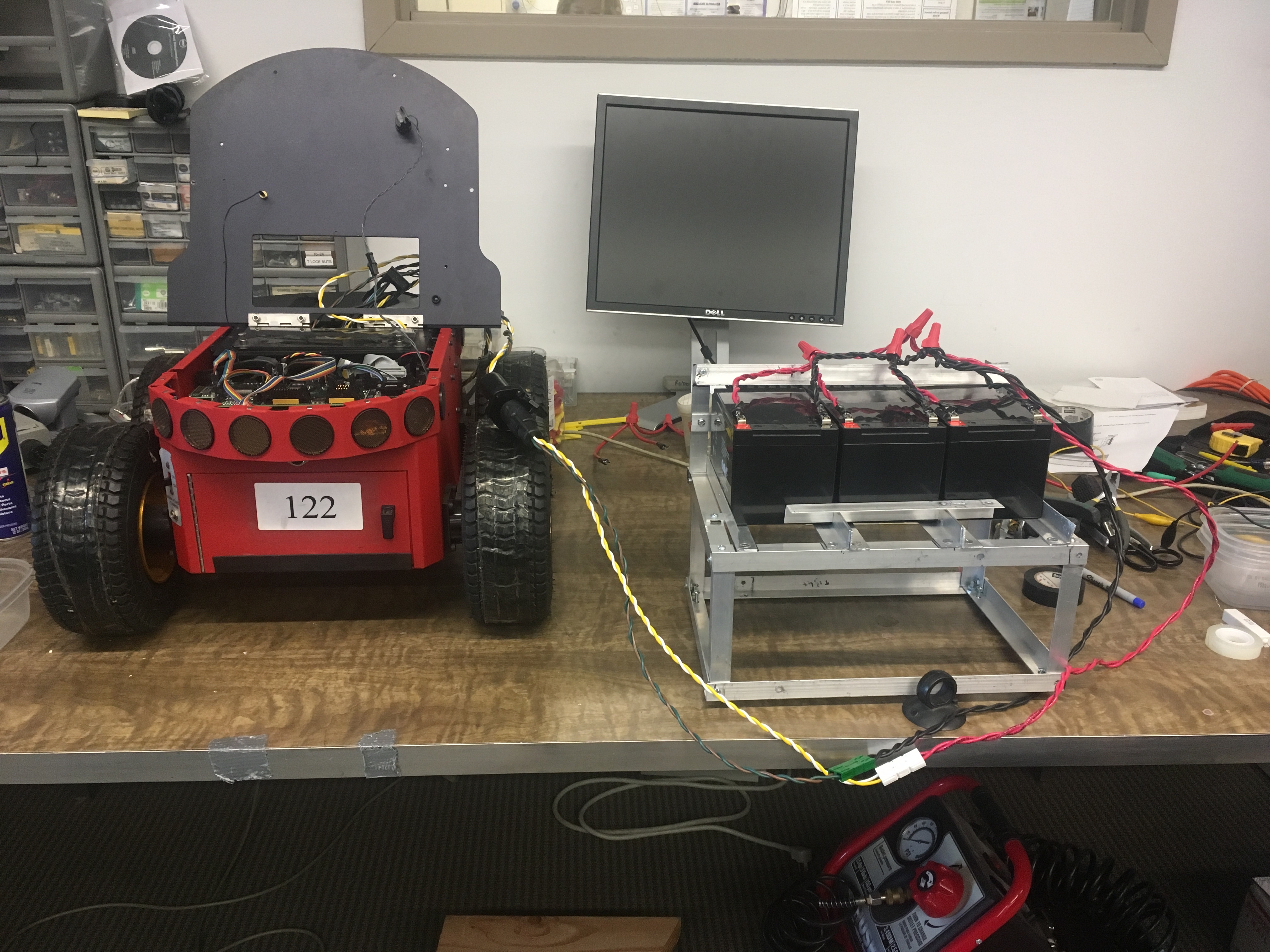
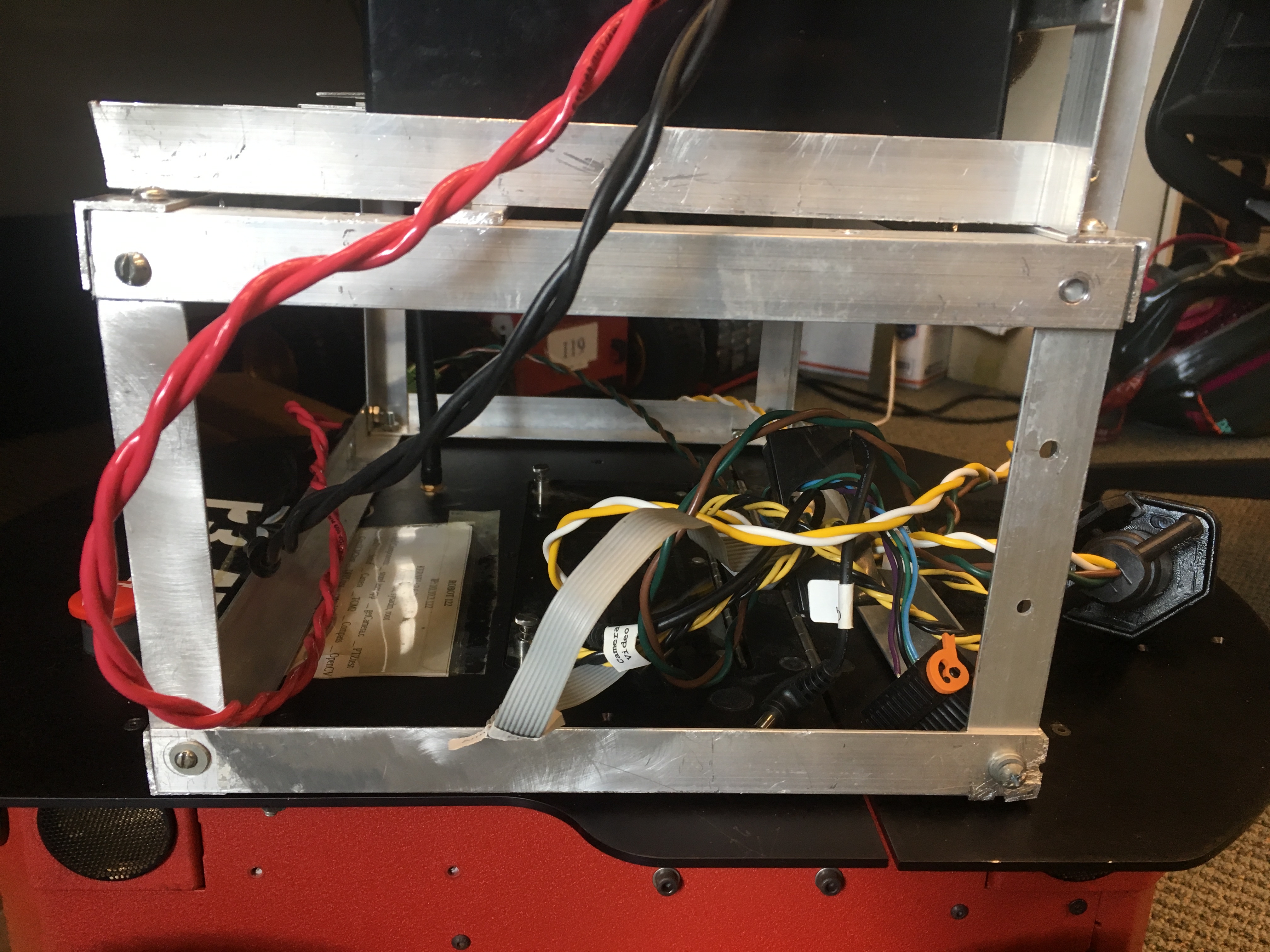
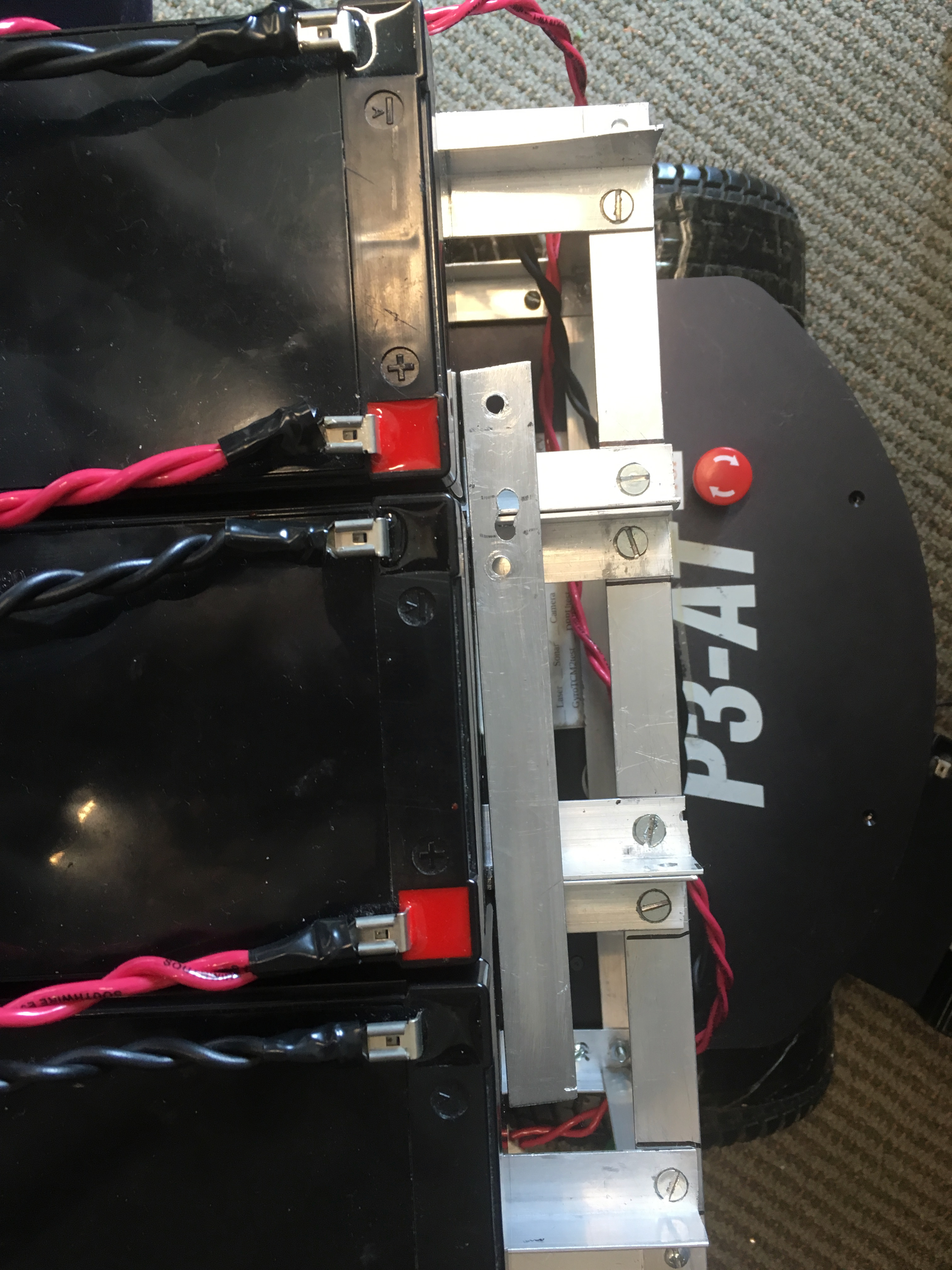
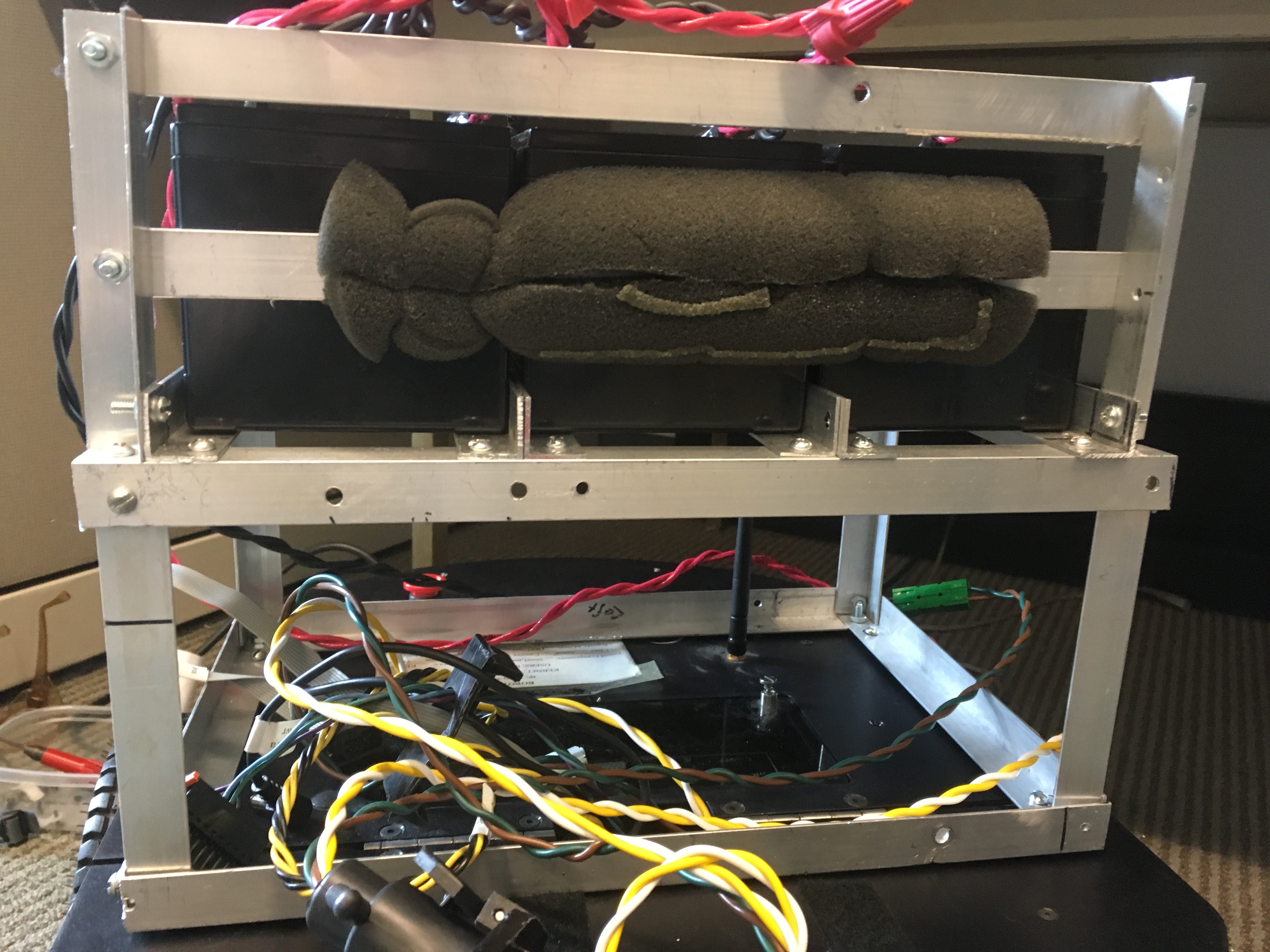
Testing
This booster pack more than doubled the life span of the robot during two phases of testing.
The first phase of testing consisted of infinitly looping through turns and direction changing. The robot was rasied on a box so that the teh wheels weer of the ground. Its left and right wheels moves in opposing directions for a set period of time and then changed directions until the battery was drained. Un-boosted the battery lasted about 4 hours, with the boosted the batteries lasted about 8 hours.
There is some room for error as the the the length of the boosted bot's test run required it to be stopped, turned off, and restarted during lab occupancy intervals.
The second phase of testing involved running a bot without the pack and bot with the booster pack in demo mode in an enclosed psace running object avoidance using the laser and sonar. The un boosted lasted roughly 2 hours while the boosted bot lasted roughly 4.5 hours.
Video of testing can be found in the included attatchments below labeled: "Testing_of_Booster_Pack"
Permissions
Persons/group who can view/change the page:
REMOVE the first line to allow this topic to be seen by all
- Set ALLOWTOPICCHANGE = FRCVRoboticsGroup
-- (c) Fordham University Robotics and Computer Vision
| I | Attachment | History | Action | Size | Date | Who | Comment |
|---|---|---|---|---|---|---|---|
| |
50724960895__DD1561E6-2030-4443-9D73-A281DFE0EECE.JPG | r1 | manage | 1888.9 K | 2017-07-07 - 18:57 | MaggieGates | mount + batteries |
| |
Battery_Attachments.jpg | r1 | manage | 4726.2 K | 2017-05-25 - 21:10 | MaggieGates | Booster Pack Connections and Mount Photos |
| |
Battery_Mount.jpg | r1 | manage | 2113.9 K | 2017-05-25 - 21:10 | MaggieGates | Booster Pack Connections and Mount Photos |
| |
Entire_Setup.jpg | r1 | manage | 5293.6 K | 2017-05-25 - 21:10 | MaggieGates | Booster Pack Connections and Mount Photos |
| |
IMG_5181.JPG | r1 | manage | 1911.7 K | 2017-07-07 - 19:00 | MaggieGates | wiring |
| |
IMG_8366.JPG | r1 | manage | 1846.2 K | 2017-07-07 - 18:59 | MaggieGates | |
| |
IMG_8968.JPG | r1 | manage | 2144.4 K | 2017-07-07 - 18:52 | MaggieGates | Battery used |
| |
IMG_8969.JPG | r1 | manage | 1867.8 K | 2017-07-07 - 18:52 | MaggieGates | Battery used |
| |
Mounted_Back_View.jpg | r1 | manage | 5256.8 K | 2017-05-25 - 21:13 | MaggieGates | |
| |
Mounted_Side_View.jpg | r1 | manage | 5167.7 K | 2017-05-25 - 21:13 | MaggieGates | |
| |
Mounted_Top_View.jpg | r1 | manage | 7149.4 K | 2017-05-25 - 21:13 | MaggieGates | |
| |
Negative_Terminal_on_Battery_Strip_in_Robot.jpg | r1 | manage | 5124.5 K | 2017-05-25 - 21:10 | MaggieGates | Booster Pack Connections and Mount Photos |
| |
Positive_and_Negative_Terminals_on_Battery_Strip_In_Robot.jpg | r1 | manage | 5183.4 K | 2017-05-25 - 21:10 | MaggieGates | Booster Pack Connections and Mount Photos |
| |
Postive_Terminal_on_Battery_Strip_in_Robot.jpg | r1 | manage | 5451.1 K | 2017-05-25 - 21:10 | MaggieGates | Booster Pack Connections and Mount Photos |
| |
PowerPole_Connection_Between_Battery_wires_and_Rv_Connector.jpg | r1 | manage | 4900.7 K | 2017-05-25 - 21:10 | MaggieGates | Booster Pack Connections and Mount Photos |
| |
PowerPole_Connectors.jpg | r1 | manage | 4285.5 K | 2017-05-25 - 21:10 | MaggieGates | Booster Pack Connections and Mount Photos |
| |
RV_Connector_Used.jpg | r1 | manage | 6798.4 K | 2017-05-25 - 21:10 | MaggieGates | Booster Pack Connections and Mount Photos |
| |
Testing_of_Booster_Pack.m4v | r1 | manage | 29051.0 K | 2017-05-25 - 21:16 | MaggieGates | Testing of Booster Pack |
Ideas, requests, problems regarding TWiki? Send feedback



